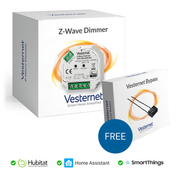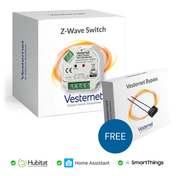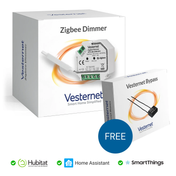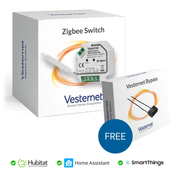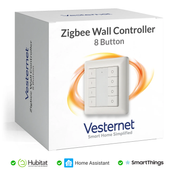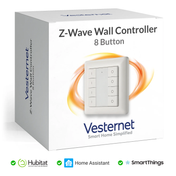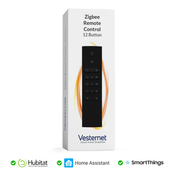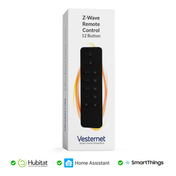This application note explains how to use the secondary (I2 and I3) switch inputs of the Qubino Flush Dimmer Plus modules to directly control other Associated Z-Wave devices.
Secondary Switch Input
The module have three switch inputs. I1 is normally used to control the local load physically connected to the module, while I2 can be used to control the local load as well as other Z-Wave devices:
- Control the local load as part of 2-way and multi-way lighting circuits - for more information see Standard Lighting Circuits
- Control any other Z-Wave device that is Associated with the module.
This feature makes the module very versatile and yet easy to configure.
Using the Secondary Switch
By using the secondary (I2) switch input you can easily control other Z-Wave devices.
The following shows a simplified diagram where a Qubino Flush Dimmer Plus module is able to control a number of Z-Wave devices Including other modules, wall plugs and dimmer sockets.

Note: Connections for the local load are not shown in the above diagram - the module must be connected to a local load!
Association Groups
Once you have wired the modules into your installation, you need to Associate the module to other Z-Wave device(s).
Note: For step-by-step instructions on how to create Associations between both devices follow Application Note 19 - Associating Devices in Z-Wave Controllers.
The Qubino Flush Dimmer Plus has 9 Association Groups to choose from depending on how you want to control the associated device:
- Group 2 - assigned to I1 and sends Basic command class frame (On/Off) according to the state of the device
- Group 3 - assigned to I1 and sends Multilevel Switch command class frame (Dimmer). Allows sending dim/brighten commands to Associated devices
- Group 4 - assigned to the Load status and sends Multilevel Switch command class frame (Dimmer). Allows sending dim/brighten commands to Associated devices
- Group 5 - assigned to I2 and sends Basic command class frame (On/Off) according to the state of the device
- Group 6 - assigned to I2 and sends Notification Report command class frame.
- Group 7 - assigned to I2 and sends Binary Sensor Report command class frame (On/Off) according to the state of the device
- Group 8 - assigned to I3 and sends Basic command class frame (On/Off) according to the state of the device
- Group 9 - assigned to I3 and sends Notification Report command class frame.
- Group 10 - assigned to I3 and sends Binary Sensor Report command class frame (On/Off) according to the state of the device
Parameter Settings
Some parameters can be set to configure how the device sends commands to each Association Group.
Parameter 100
This determines if I2 is enabled or disabled. Disabling it will result in hiding the endpoint according to the parameter set value.
Available settings are:
- 0 - Endpoint, I2 disabled (default)
- 1 - Home Security; Motion Detection
- 2 - CO; Carbon Monoxide detected
- 3 - CO2; Carbon Dioxide detected
- 4 - Water Alarm; Water Leak detected
- 5 - Heat Alarm; Overheat detected
- 6 - Smoke Alarm; Smoke detected
- 9 - Sensor binary
Parameter 101
This determines if I3 is enabled or disabled. Disabling it will result in hiding the endpoint according to the parameter set value.
Available settings are:
- 0 - Endpoint, I2 disabled (default)
- 1 - Home Security; Motion Detection
- 2 - CO; Carbon Monoxide detected
- 3 - CO2; Carbon Dioxide detected
- 4 - Water Alarm; Water Leak detected
- 5 - Heat Alarm; Overheat detected
- 6 - Smoke Alarm; Smoke detected
- 9 - Sensor binary

